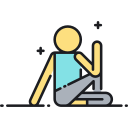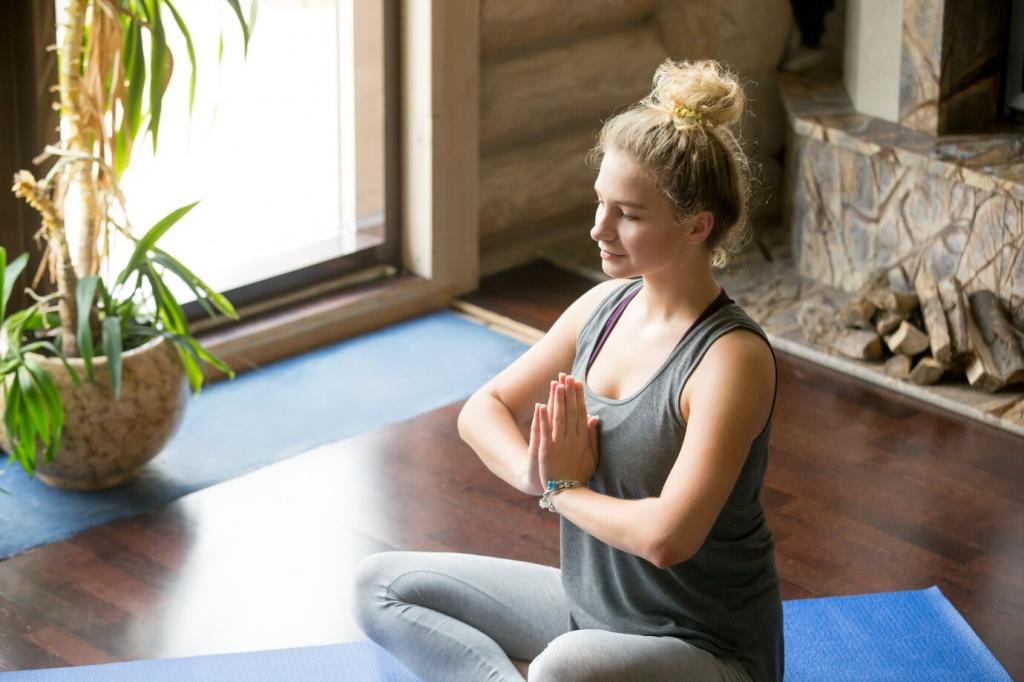
Breathing Techniques and Yoga Poses for Stress Management
Today’s chosen theme: Breathing Techniques and Yoga Poses for Stress Management. Step into a calmer rhythm with practical breathwork, grounding postures, and relatable stories that help you reset your nervous system and reclaim focus—anywhere, anytime.
Why Breath Shapes Stress
The Physiology of Calm
Slow, steady breathing nudges the vagus nerve, activating the parasympathetic response that lowers heart rate and softens muscle tension. This is why a deep exhale can feel like a switch, shifting you from alarm to clarity in just a minute.

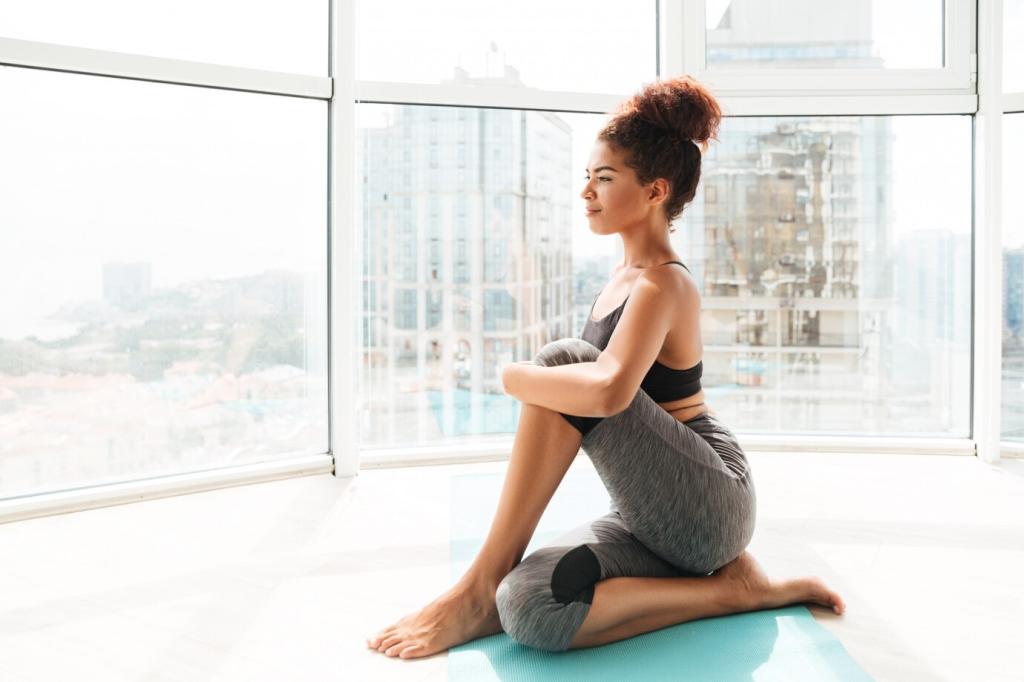
CO2 Tolerance and Anxiety
Anxious breathing often becomes rapid and shallow, dumping carbon dioxide too quickly and triggering sensations of panic. Training a longer exhale gently improves CO2 tolerance, stabilizes blood chemistry, and helps your body interpret stress signals as manageable rather than overwhelming.
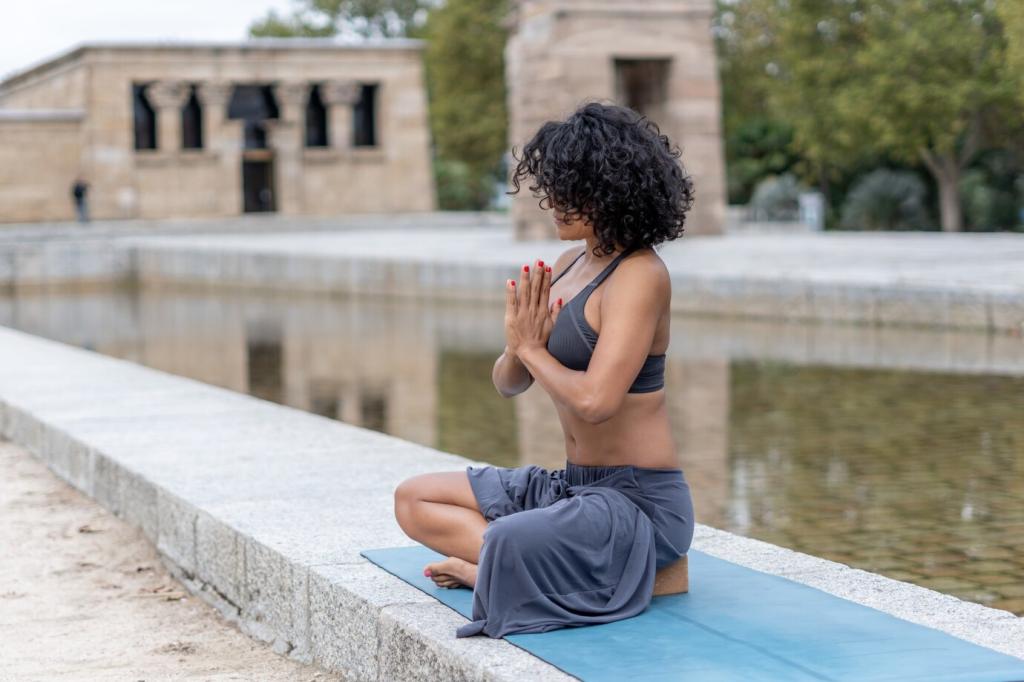
Box Breathing (4-4-4-4)
Inhale for four, hold for four, exhale for four, hold for four. Repeat for one to three minutes. Pilots and athletes use this square rhythm to steady focus under pressure. Try it before a tough conversation and notice how your tone grows calmer and clearer.
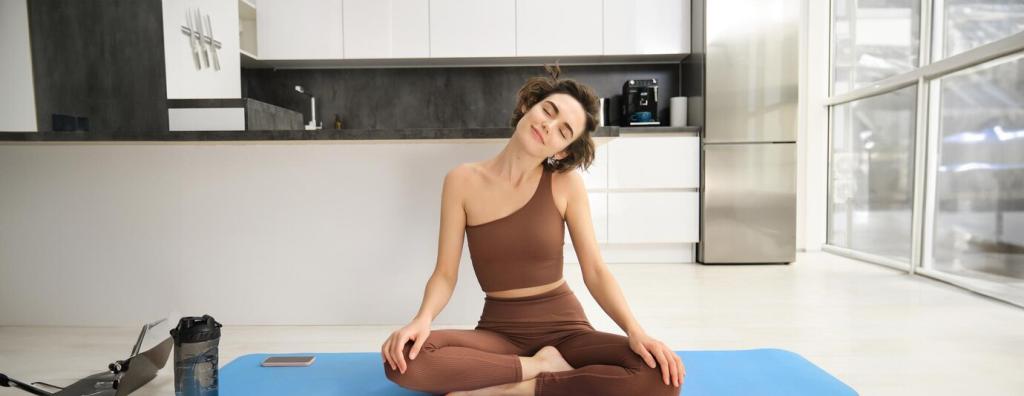
Extended Exhale (4-6 or 4-8)
Breathe in through the nose for four counts, then stretch the exhale to six or eight. That gentle lengthening signals safety to the nervous system. If counting feels rigid, exhale like fogging a mirror softly, letting your shoulders melt and your jaw unclench.
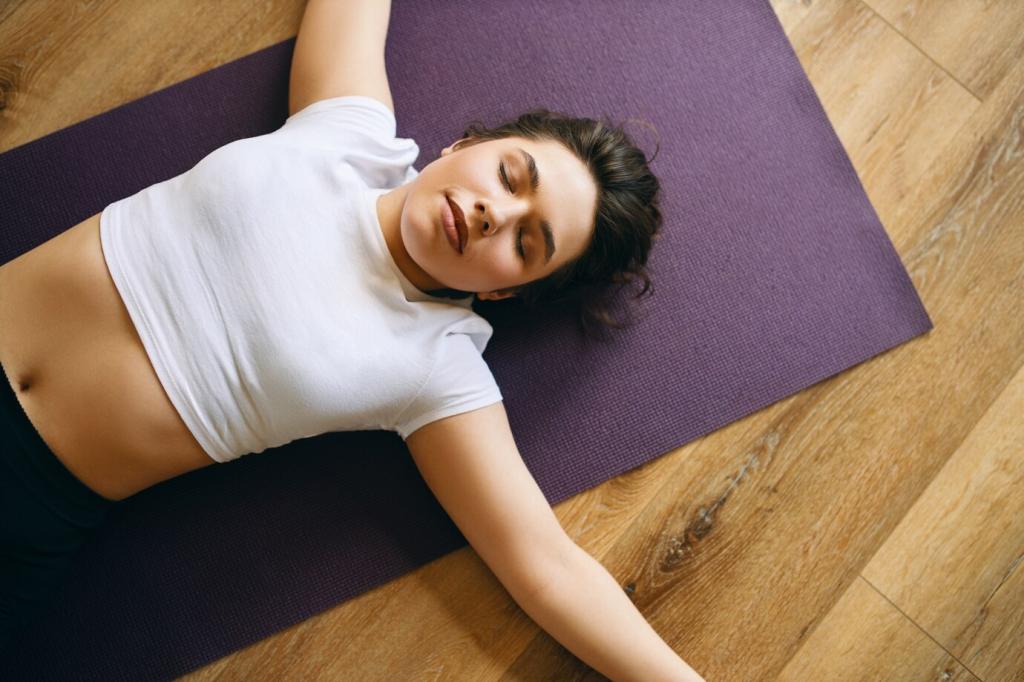
Resonant Breathing (5–6 Breaths Per Minute)
Aim for a smooth five-second inhale and five-second exhale. This cadence supports heart rate variability, a marker linked to stress resilience. Set a timer for three minutes, close your eyes, and imagine drawing the breath low into your belly like a warm anchor.
Yoga Poses That Soothe the Nervous System
Child’s Pose (Balasana)
Knees wide or together, big toes touch, forehead supported on the floor or a cushion. Let your belly spill into the thighs and breathe into your back ribs. Each exhale softens your shoulders, inviting a quiet, supported surrender after a demanding day.
Legs Up the Wall (Viparita Karani)
Scoot your hips close to a wall, extend your legs up, and relax your arms by your sides. Gravity assists circulation and calms the baroreceptors. Pair this with extended exhales for five minutes to melt mental noise and soothe restless, overcaffeinated afternoons.
Seated Forward Fold (Paschimottanasana)
Sit tall on a folded blanket, hinge from your hips, and keep your spine long as you reach forward. Use a strap if needed. Breathe into the back body, imagining your exhale lengthening the hamstrings and quieting racing thoughts without forcing depth or speed.
Micro-Practices for Busy Days
Sit upright, ground your feet, and place one hand on your belly. Take six slow breaths, making the exhale longer than the inhale. Drop your shoulders with each out-breath. This short ritual clears mental residue so you enter the next call present and composed.
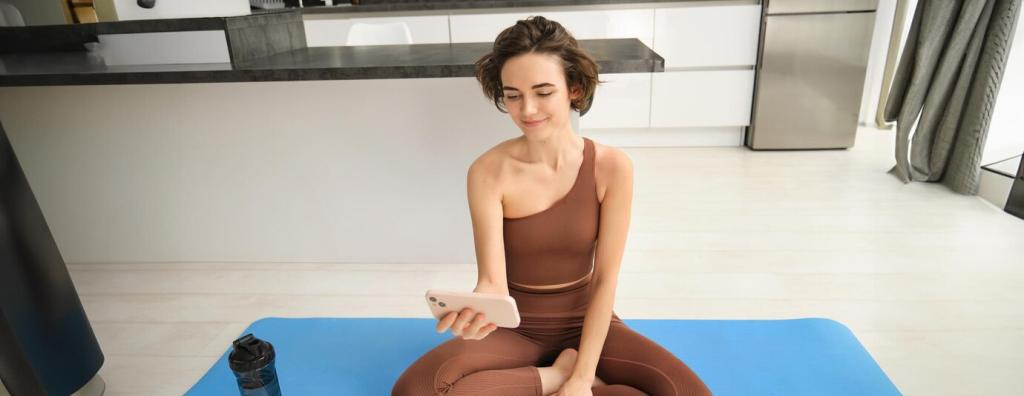
A Short Story: The Email Avalanche
Maya’s inbox exploded at 9:03 a.m.—urgent flags, red exclamation points, a calendar collision. Her breath shot into her chest, shoulders crept upward, and every message felt like a verdict. She almost replied hastily, then paused, remembering the exhale practice from yesterday’s commute.
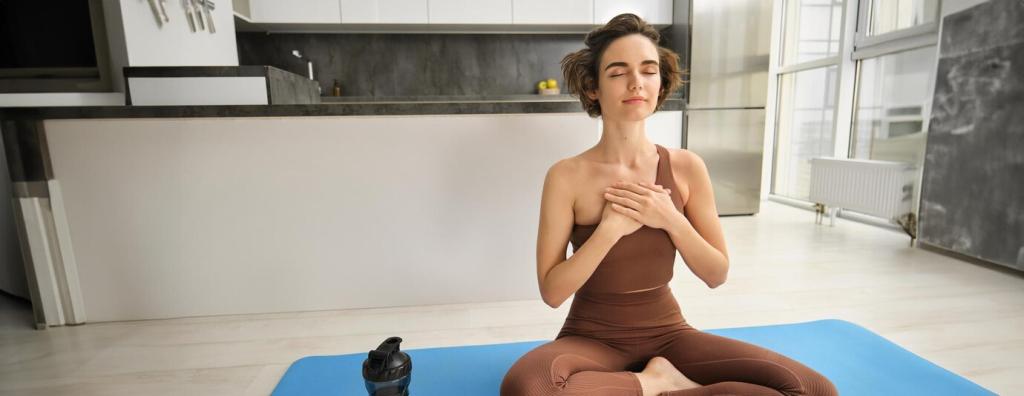
Build Your Personal Practice Plan
List your top three stress cues—calendar overload, conflict, or noisy spaces. Match each with one breath and one pose. For example, conflict equals extended exhale plus Seated Forward Fold. Consistency builds reflexes, so practice during calm moments to reinforce reliability under strain.
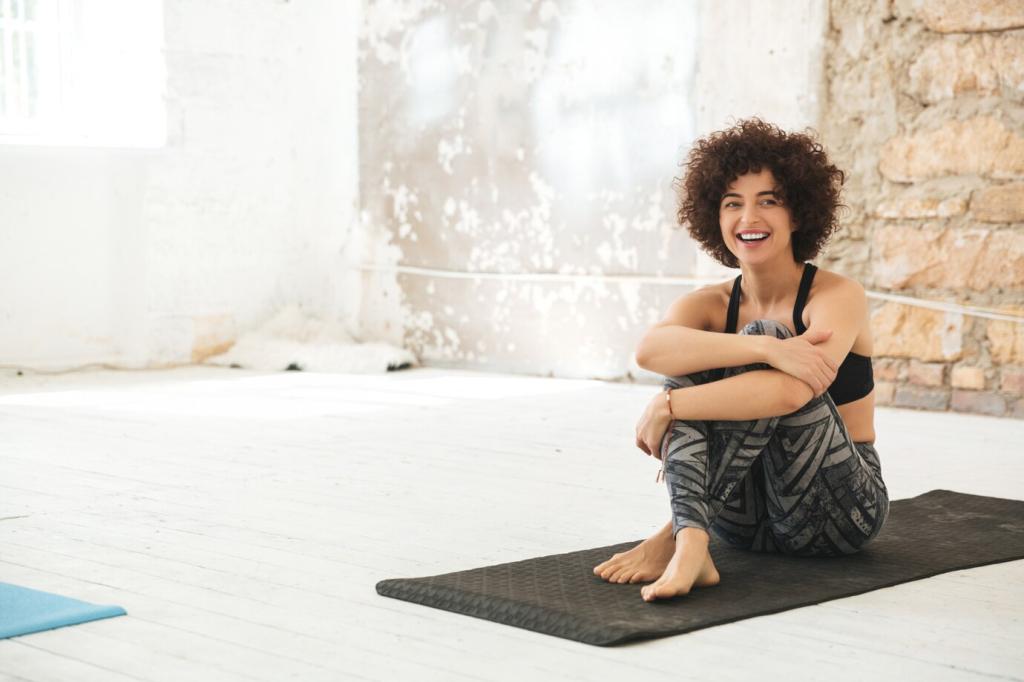
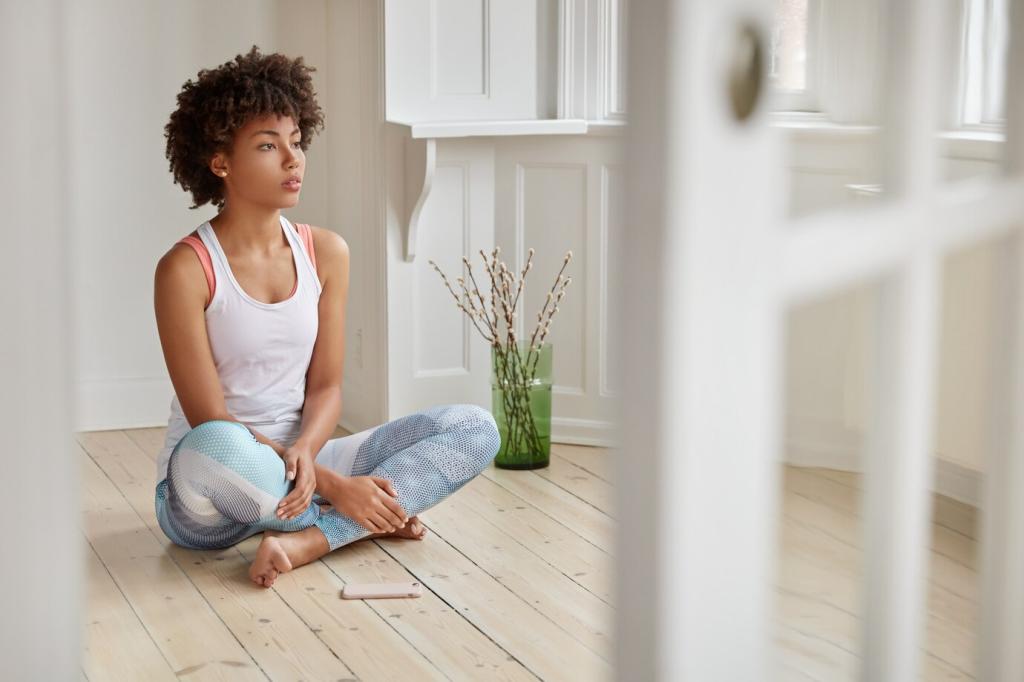
Build Your Personal Practice Plan
Use a one-to-five calm score before and after each practice. Note breath rate, posture, and any tension shifts. Over two weeks, patterns will emerge, guiding tweaks. If you like gadgets, explore heart rate variability, but keep the habit effortless and aligned with real life.
